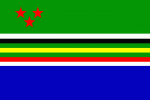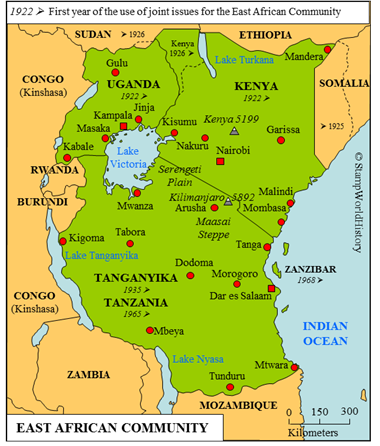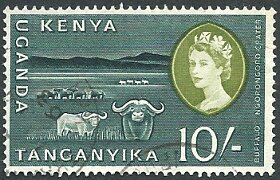
East African Community
Quick reference
General issues: Kenya & Uganda 1922-1927; Kenya, Uganda & Tanganyika 1935-1963; Kenya, Uganda, Tanganyika & Zanzibar 1964; Kenya, Uganda & Tanzania 1965-1976
Country name on general issues: Kenya & Uganda; Kenya, Uganda & Tanganyika; Kenya, Uganda, Tanganyika & Zanzibar; Kenya, Uganda & Tanzania
Currency: 1 Shilling = 100 Cent 1922-1976
Population: 10 590 in 1925, 42 776 in 1977
Political history East African Community
The East African Community is a union of cooperating countries in eastern Africa. Strictly speaking, the East African Community existed from 1967 until 1977. This profile also covers the predecessors of the East African Community starting with the postal union between Kenya & Uganda in 1920.
Kenya and Uganda in the early 20th century are both British possessions. The British have established themselves in eastern Africa from 1888 through the British East Africa Company. The protectorates of Uganda and British East Africa are formed in 1894 and 1895 respectively. The protectorate of British East Africa will, in 1920, become the British colony of Kenya. British East Africa and Uganda have, as early as 1901, formed a postal union. This postal union is continued after 1920 by Kenya and Uganda.
The union is extended in 1930 when Tanganyika joins Kenya and Uganda to form the East African Posts and Telecommunications Union. Tanganyika is the larger part of the former German East Africa that, in 1920, has become a British mandated territory. The union between the three countries in subsequent years will go by different names: from 1948 the East African High Commission, from 1961 the East African Common Services Organization and from 1967 the East African Community. The union will be further extended in 1964 to include Zanzibar when Tanganyika and Zanzibar form the United Republic of Tanganyika & Zanzibar – the name of which is changed to Tanzania in the same year.
The East African Community is dissolved in 1977. With a different scope of cooperation, the union was revived in 2000 – again by the name of the East African Community – now with Burundi and Rwanda as additional members.
Postal history East African Community
The first stamps issued within the scope of this profile are from 1922 the issues for Kenya & Uganda that superseded the issues for British East Africa & Uganda. The stamps were inscribed ‘Kenya & Uganda’. High face values were issued – up to £ 100 – that, however, were used almost uniquely for fiscal purposes.
Subsequent issues show the development of the union: in 1935 stamps are issued inscribed ‘Kenya, Uganda & Tanganyika’, in 1964 stamps are inscribed ‘Kenya, Uganda, Tanganyika & Zanzibar’ and from 1965 until 1976 stamps are inscribed ‘Kenya, Uganda & Tanzania’.
From 1922 until the early 1960’s, the joint issues were the only issues used in the countries participating in the union. As these countries gained self government or independence, they started issuing their own stamps that would be used in concurrence with the joint issues. Thus, Tanganyika has issued stamps from 1961, Uganda from 1962, Kenya from 1963, the United Republic of Tanganyika & Zanzibar from 1964 and Tanzania from 1965. These issues were valid not only in the issuing countries, but in all countries within the union – they were actually on sale in all countries the first two weeks after being issued.
The position of Zanzibar is somewhat different. Zanzibar has issued stamps from 1895 and – although it joined the union as part of the United Republic of Tanganyika & Zanzibar in 1964 – Zanzibar would continue to issue stamps until 1967. It is not until 1968 that the joint issues of the union, concurrently with the issues of Tanzania, will come into use.
In all participating countries, the joint issues were valid until 1977 when the East African Community was dissolved. The current successor of the East African Community has not issued stamps.
Album pages
← Previous page: DjiboutiNext page: Egypt →







